Abstract
The risk of congenital defect was examined in 47,913 pregnancies of women employed for 15 hours a week or more at time of conception. The rate of defects of all types per 1000 births in this series was 25.0; 1.8 from defects classified as chromosomal (group A), 10.8 as developmental (group B), and 12.5 as musculoskeletal (group C). Some evidence of an excess in the risk ratio (p less than 0.05) was found in the services sector and in four occupations--agriculture and horticulture (2.61), telephone and postal clerks (1.74), a miscellaneous group of service jobs (1.68), and receptionists and information clerks (1.47); excesses of lower statistical significance (p less than 0.1) were found in those engaged in plastics and rubber manufacture (2.02) and in child minders (1.84). There were two cases of tracheo-oesophageal fistula--a rare defect--among eight defects (1.32 expected) in agriculture and horticulture. Overall, the distribution of risk ratios in the 60 occupations examined was not significantly heterogeneous. Analysis of chemical exposure profiles for each occupational group showed no evidence of any increased risk, perhaps due to lack of sensitivity and discrimination in this method of exposure estimation. In 152 pregnancies of doctors and nurses who had administered antineoplastic drugs in the first month eight defects, miscellaneous in type, were observed compared with 4.05 expected (p = 0.05). Special study of musculoskeletal defects and work demands showed some evidence of an association with a long working week (greater than or equal to 46 hours) but no other ergonomic factor. With these few exceptions the survey failed to identify appreciable risk of congenital defect related to occupation.
Full text
PDF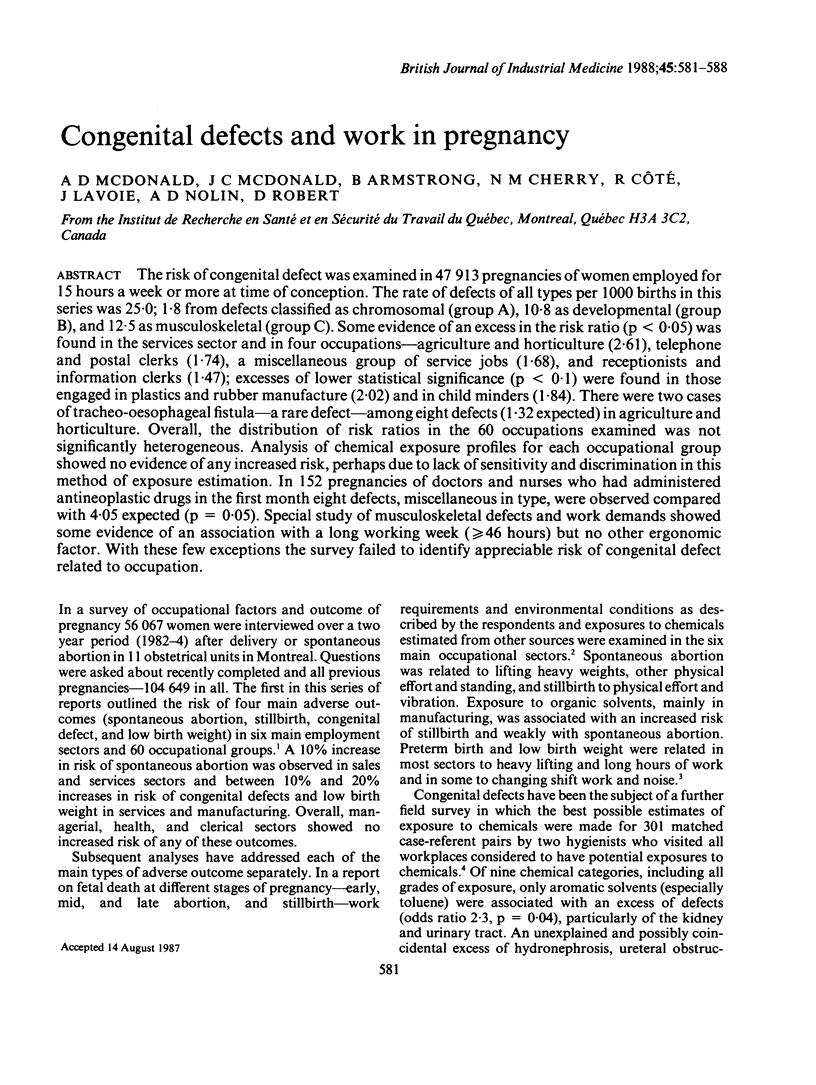
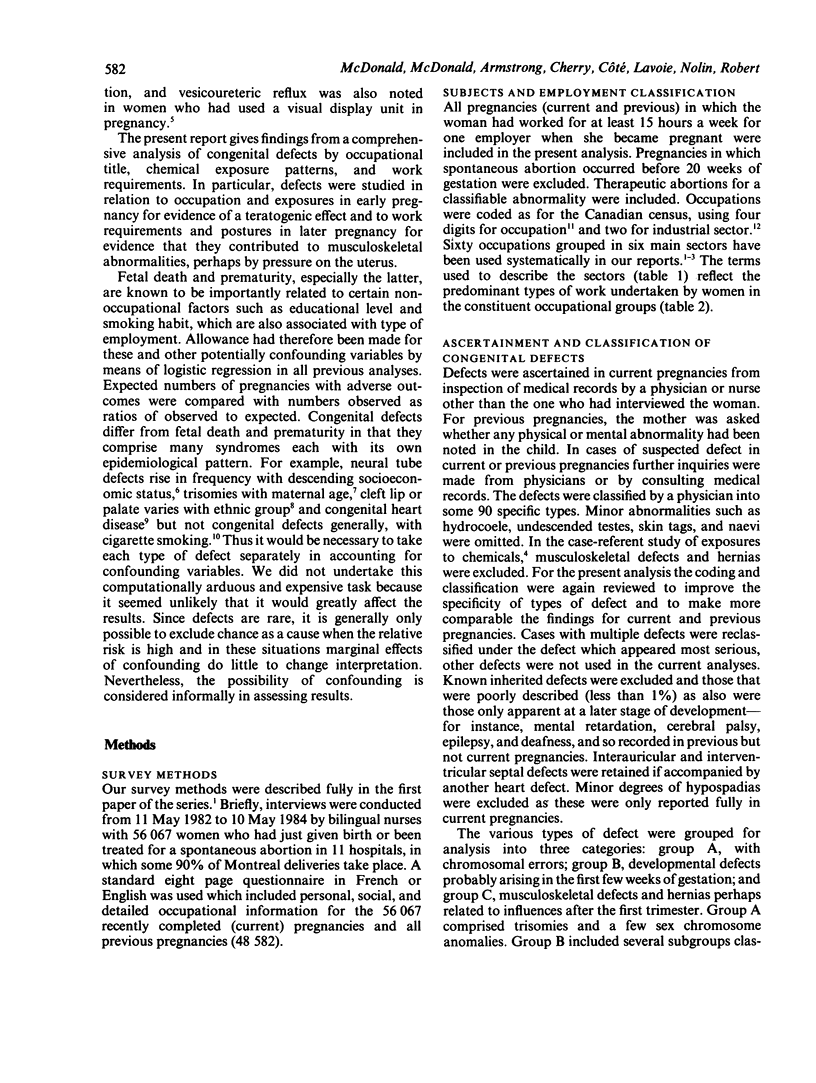
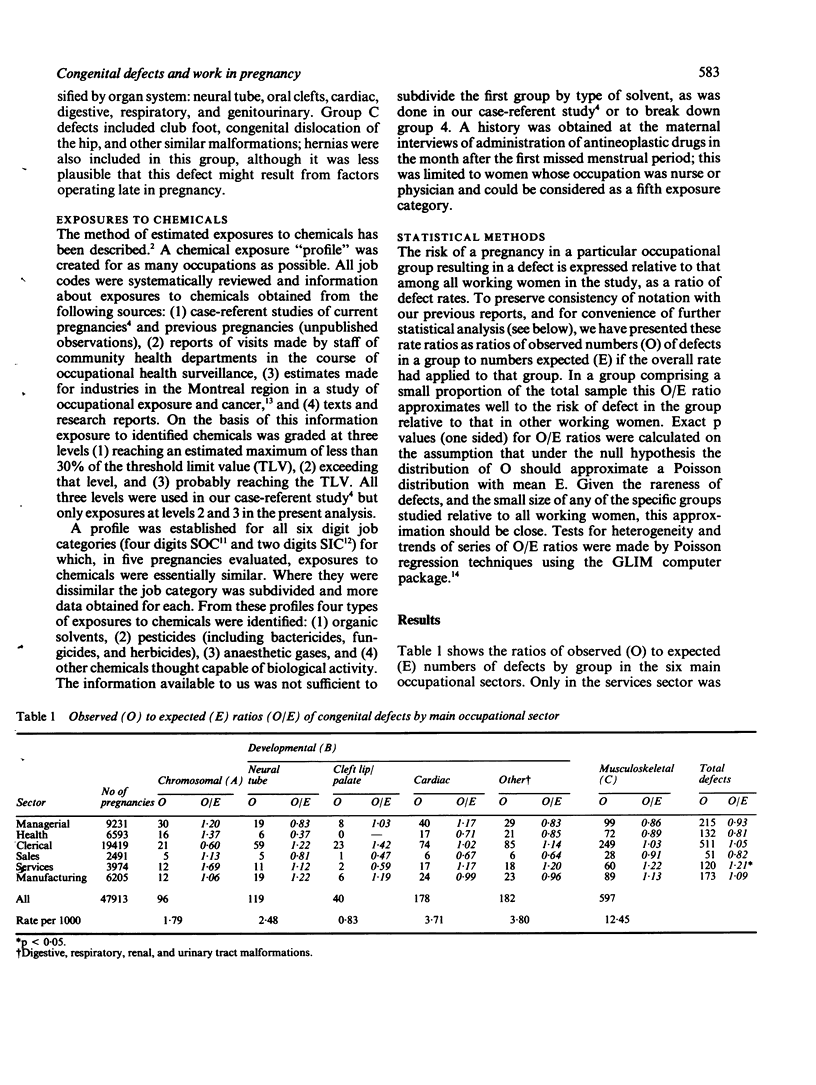
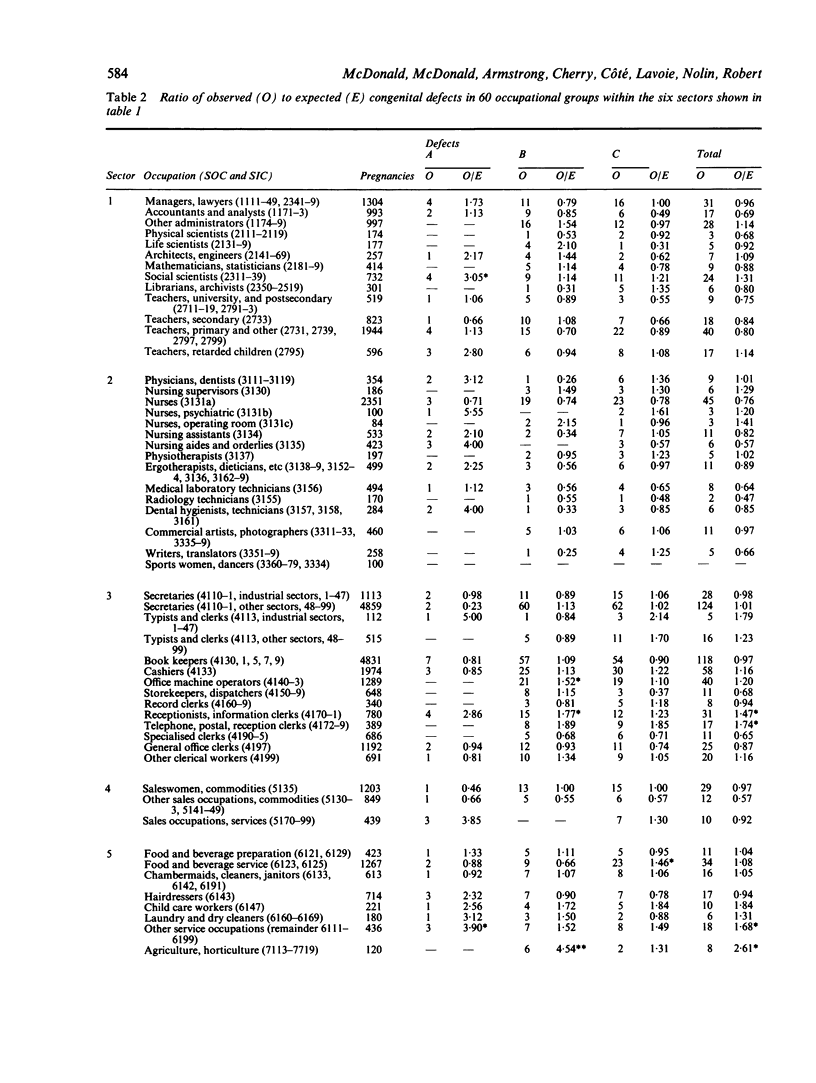
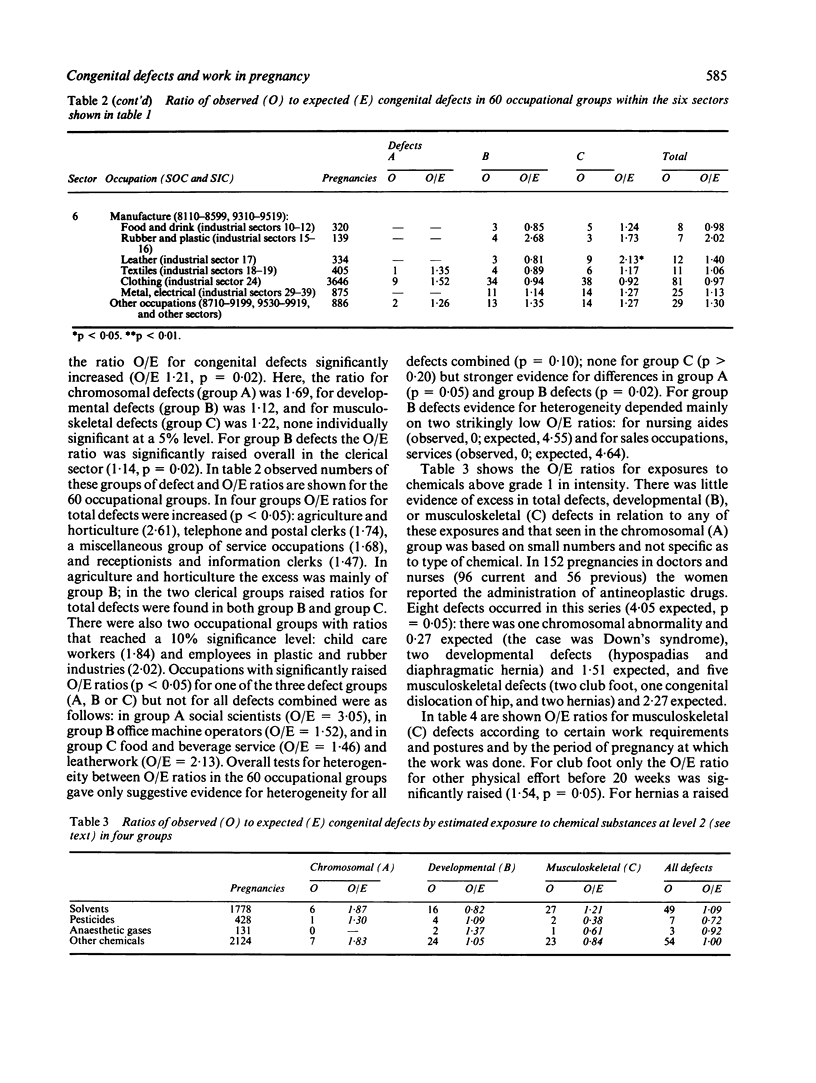
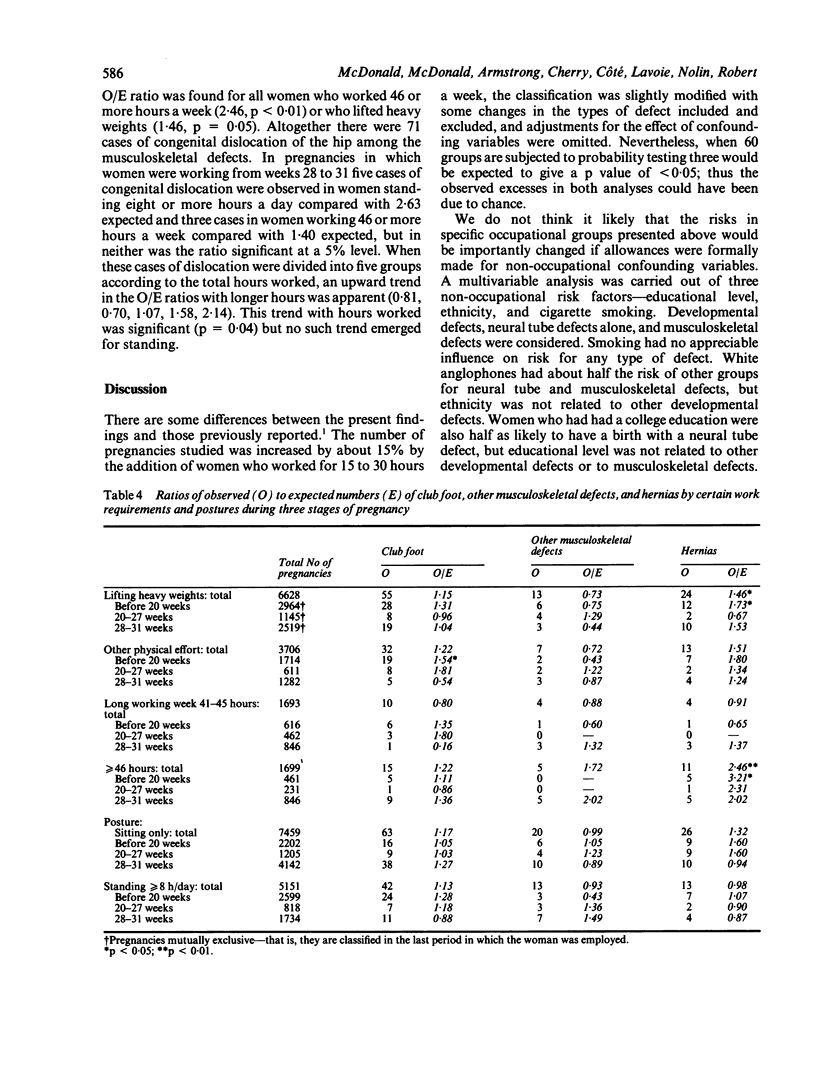
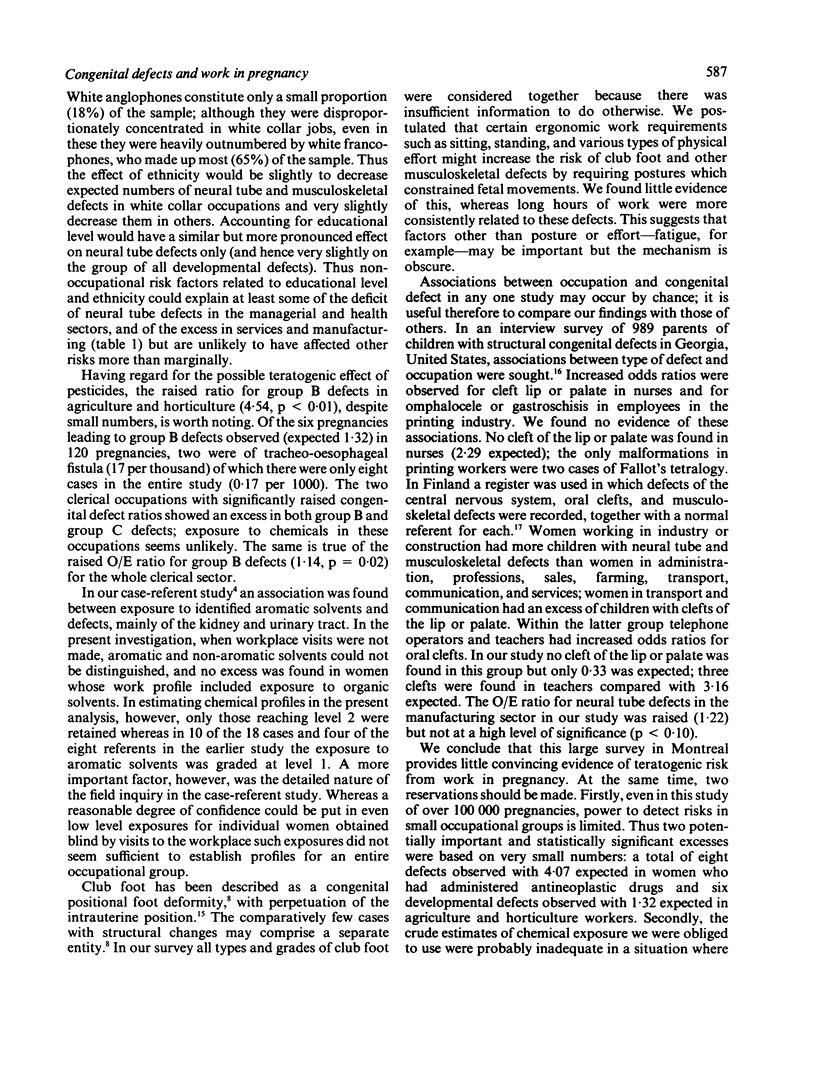
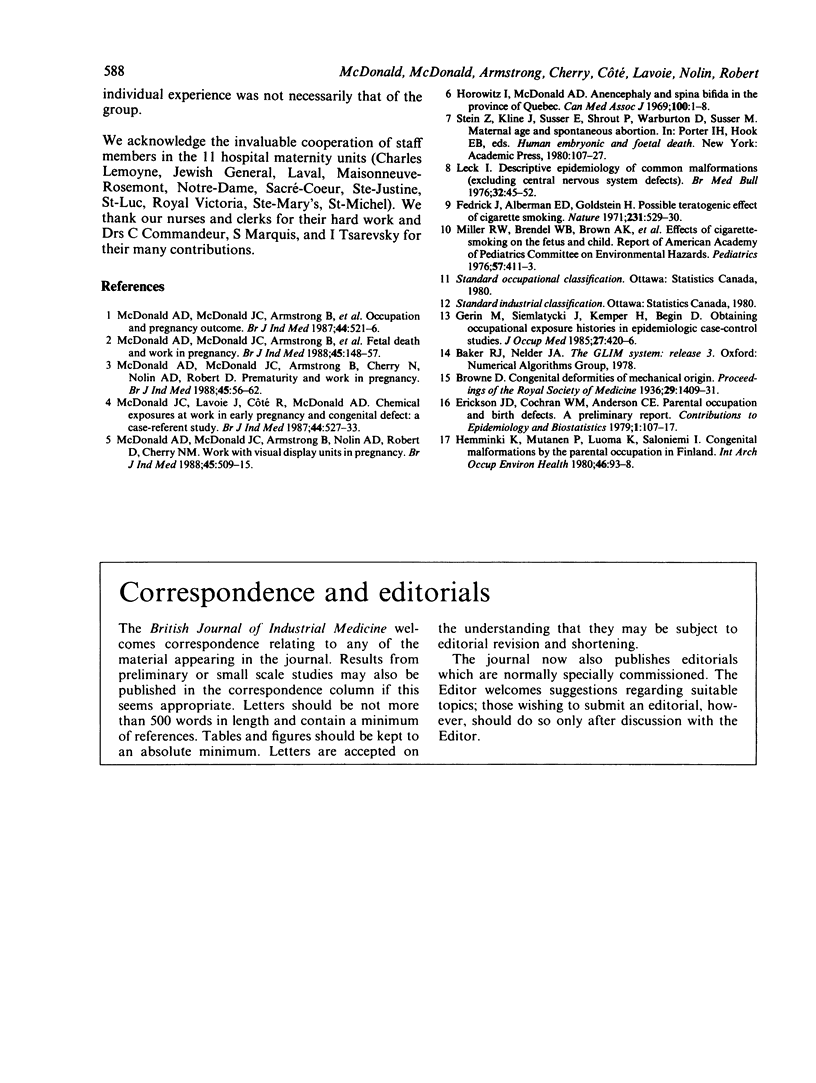
Selected References
These references are in PubMed. This may not be the complete list of references from this article.
- Alberman E. D., Goldstein H. Possible teratogenic effect of cigarette smoking. Nature. 1971 Jun 25;231(5304):529–530. doi: 10.1038/231529a0. [DOI] [PubMed] [Google Scholar]
- Browne D. Congenital Deformities of Mechanical Origin: (Section for the Study of Disease in Children). Proc R Soc Med. 1936 Sep;29(11):1409–1431. [PMC free article] [PubMed] [Google Scholar]
- Dallaire L., Kingsmill-Flynn D., Leboeuf G. Autoimmunity and chromosomal aberrations: serological studies in mothrs of childern with Down's syndrome. Can Med Assoc J. 1969 Jan 4;100(1):1–4. [PMC free article] [PubMed] [Google Scholar]
- Gérin M., Siemiatycki J., Kemper H., Bégin D. Obtaining occupational exposure histories in epidemiologic case-control studies. J Occup Med. 1985 Jun;27(6):420–426. [PubMed] [Google Scholar]
- Hemminki K., Mutanen P., Luoma K., Saloniemi I. Congenital malformations by the parental occupation in Finland. Int Arch Occup Environ Health. 1980;46(2):93–98. doi: 10.1007/BF00378188. [DOI] [PubMed] [Google Scholar]
- Leck I. Descriptive epidemiology of common malformations (excluding central nervous system defects). Br Med Bull. 1976 Jan;32(1):45–52. doi: 10.1093/oxfordjournals.bmb.a071323. [DOI] [PubMed] [Google Scholar]
- McDonald A. D., McDonald J. C., Armstrong B., Cherry N. M., Nolin A. D., Robert D. Prematurity and work in pregnancy. Br J Ind Med. 1988 Jan;45(1):56–62. doi: 10.1136/oem.45.1.56. [DOI] [PMC free article] [PubMed] [Google Scholar]
- McDonald A. D., McDonald J. C., Armstrong B., Cherry N., Delorme C., D-Nolin A., Robert D. Occupation and pregnancy outcome. Br J Ind Med. 1987 Aug;44(8):521–526. doi: 10.1136/oem.44.8.521. [DOI] [PMC free article] [PubMed] [Google Scholar]
- McDonald A. D., McDonald J. C., Armstrong B., Cherry N., Nolin A. D., Robert D. Work with visual display units in pregnancy. Br J Ind Med. 1988 Aug;45(8):509–515. doi: 10.1136/oem.45.8.509. [DOI] [PMC free article] [PubMed] [Google Scholar]
- McDonald J. C., Lavoie J., Côté R., McDonald A. D. Chemical exposures at work in early pregnancy and congenital defect: a case-referent study. Br J Ind Med. 1987 Aug;44(8):527–533. doi: 10.1136/oem.44.8.527. [DOI] [PMC free article] [PubMed] [Google Scholar]
- Northway W. H., Jr, Rezeau L., Petriceks R., Bensch K. G. Oxygen toxicity in the newborn lung: reversal of inhibition of DNA synthesis in the mouse. Pediatrics. 1976 Jan;57(1):41–46. [PubMed] [Google Scholar]


